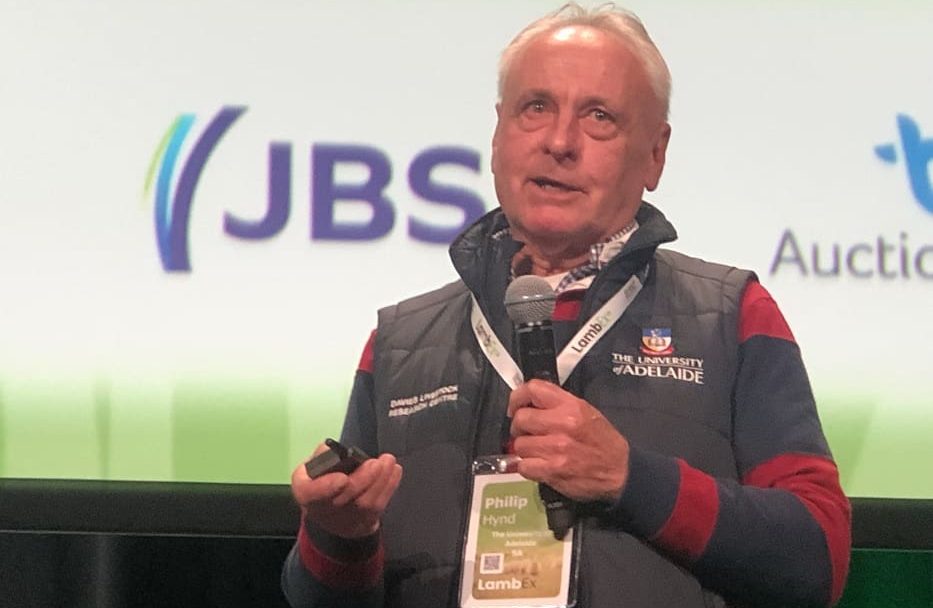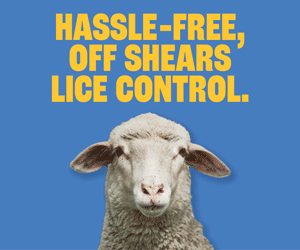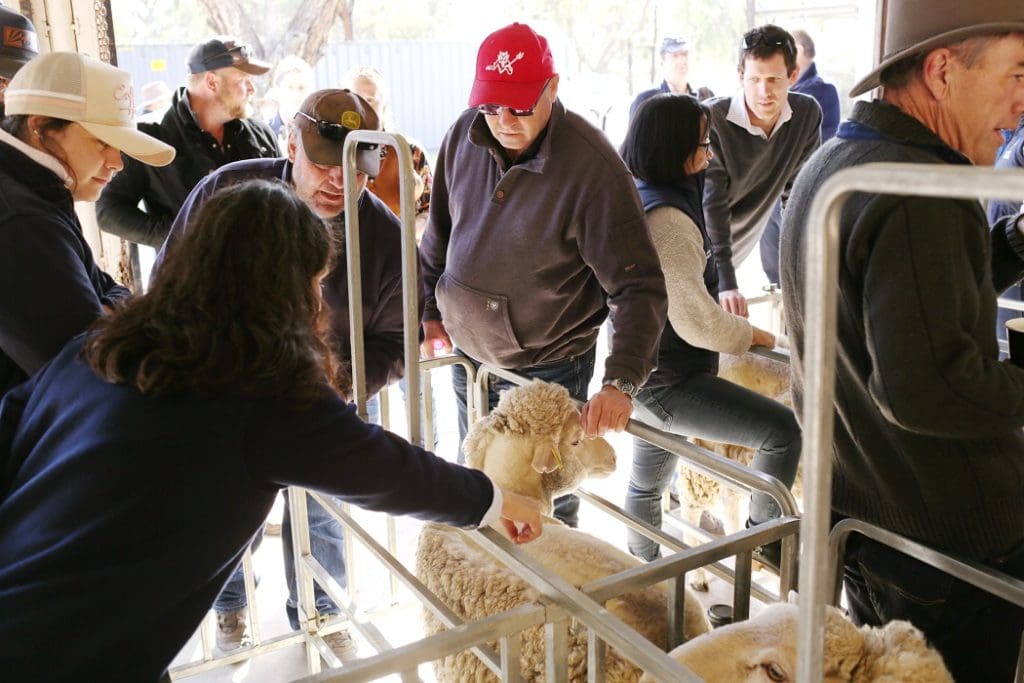
University of Adelaide’s leading wool bioharvesting researcher Dr Phil Hynd at LambEx.
EARLY machine prototypes for the removal of ‘bioharvested’ wool from sheep are due by December this year, LambEx conference delegates were told in Adelaide recently.
University of Adelaide researcher Dr Phil Hynd also told conference delegates that researchers were well on the way to finalizing the injectable process to deliver a corn protein chemical subcutaneously to weaken wool fibres and allow fleeces to be harvested.
Professor Hynd said early research to remove the wool from a treated sheep involved using a handpiece, but the research is also looking at an automated system that uses a vacuum to remove the wool and uses image analysis tools to class the wool on micron, color and stain.
“That’s the idea behind it.”
Professor Hynd said researchers knew in 2009 that they could weaken the fibre with a natural protein, but in the past two years had been able to “target” its use.
“We know exactly what targets we are aiming for biochemically and we’ve got a bag of what I call ‘bullets’, they’re biochemical bullets if you like, that will hit that target.
“Now that’s been a major breakthrough.”
The second breakthrough was to ensure that a treated fleece would not fall off the sheep in the field, he said.
“What’s new is that we are well and truly on the way to getting the injectable, that’s really exciting, we’re not there yet, but we are well on the way towards getting that target hit.
“What we then need is the engineers to step up.”
Professor Hynd said AWI had engaged engineers with experience in sheep handling and robotics, to either come up with a hand-held harvesting device able to be used by unskilled labour or a more complex automated system with fleece classing.
 “They all have to address sheep delivery, sheep restraint, sheep positioning, wool removal, in-shade processing and pressing, with a due date for their first prototypes by December this year.
“They all have to address sheep delivery, sheep restraint, sheep positioning, wool removal, in-shade processing and pressing, with a due date for their first prototypes by December this year.
“This is a fast-track project, these guys are all looking at different mechanisms; whether it’s mechanical or whether its’s using air vortices to break the fibres and so on; they’re all on track for that,” he said.
Professor Hynd said after 15 years the researchers now have the breakthroughs that break wool fibres for removal with a single injection “and we are well on the way towards making that work.”
He said the process meant a uniform breakage in the fleece with no second cuts, skin cuts or pieces, less noil.
“If that doesn’t excite you then you are not very interested in wool because this is a major step change for this industry.”
Professor Hynd revealed that he was contacted most frequently by sheep meat producers, rather than Merino wool growers, because shearing is costing the crossbred lamb producers more than their wool is worth.
“And they want me to get the wool to fall off in the field now.
“So I’ve spent 20 years making sure that the wool doesn’t fall off in the field … and now they want me to make it fall off in the field.”
But Professor Hynd said researchers think they have found a way of working with the sheep meat producers.
The professor said he couldn’t say when the technology would be available to producers, but he was working to make it as cheap and accessible as possible.
“Whether it’s every farmer owns a machine or whether it’s a contract machine that comes around, we don’t know at this stage.
“But I think watch this space, this is an opportunity for the wool industry to jump and catch up with other industries, as I talked about before.”
AWI finalises contracts for harvesting phase

AWI’s Claire Diaz, left, discussing biological wool harvesting with wool growers at a demonstration day last year at Conargo, NSW.
Australian Wool Innovation this week said the biological harvesting of wool is progressing well, with four organisations now contracted to develop ways to harvest the wool above the weakened zone via a device that applies a force to separate the wool from the body of the sheep.
This second phase of the project follows on from the first phase, in which researchers from the University of Adelaide have used a biological agent to create a weakened zone at the base of the wool fibre that enables the fleece to remain on the sheep without a net until the wool can be mechanically removed.
AWI chief executive John Roberts said the bioharvesting research is important.
“AWI is strongly committed to this project.
“It shows the value of ongoing investment in on-farm research to benefit wool growers,” he said.
“There is much to do and we continue to work closely with project partners to make this a practical alternative to traditional shearing. This is truly exciting research.”
AWI program manager, animal wellbeing and industry resilience, Carolina Diaz said there are two streams of work underway.
“The University of Adelaide researchers are confident that the biological agent works and they are continuing with more testing.
“However, without a practical, cost-effective, and efficient way to harvest the wool, biological wool harvesting is unlikely to be a strong alternative to traditional shearing, even if the biological part of the project is a success,” she said.
“AWI therefore last year issued a worldwide Request for Proposals for the development of a variety of wool removal systems; 14 proposals for funding were submitted to AWI.
“AWI is progressing with four of the proposals, which each take a different approach to removing the wool,” she said.
University of Technology Sydney (UTS)
Building on previous AWI-funded research undertaken by UTS on wool handling automation, this project uses belt friction to remove and separate the wool from the sheep. The belts interact with a suction mechanism to transport wool to a desired location in the shed. The project will examine
animal handling and robotic control of the wool removal mechanism. It will also build on previous work done by UTS to develop a semi-autonomous wool inspection and classification, and wool handling and baling system.
University of Wollongong
This project will develop four systems for biological wool harvesting that have increasing levels of complexity, but also increasing potential for cost savings: an initial wool removal mechanism that primarily utilises suction; a manually operated handpiece that utilises the vacuum mechanism; a semi-autonomous system that automatically removes the majority of the fleece, but still requires a human shearer to remove wool from the belly/legs/head; and a fully autonomous system (from sheep to classer).
Agricultural Technology Solutions
This Australian-based company is undertaking research and development into a fully integrated biological wool harvesting system. The design will incorporate animal positioning/handling; fibre severance and wool removal utilising tangential pneumatic force via multiple air blades, or incorporated with hydro or mechanical assistance; fibre quality assessment; and collection and transfer of the wool to the bale.
Brooke and Mackenzie Pty Ltd
Building on previous AWI-funded research, Brooke and Mackenzie is re-examining a handpiece, first designed for defleecing 15 years ago, to assess its suitability and development for biological wool harvesting. While a standalone handpiece without a wool transport or handling system might not be the optimal choice for a wool harvesting system, having a functional handpiece could prove useful in the short-term.
“The development of a mechanical wool harvesting system is a significant challenge, especially the development of a fully automated system to address the full range of different harvesting components,” Ms Diaz said.
“The four projects include clear Go/No-Go stages linked to whether the researchers achieve significant milestones.
“This includes an early Go/No-Go point involving prototypes being tested later this year on treated sheep provided by the University of Adelaide,” she said.
“The management model being applied by AWI will reduce investment risks and enable collaboration between participants.”

Excellent work from a farmer point of view. Public awareness needs to be proactive so the process doesn’t get a bad reputation before it gets on the ground.